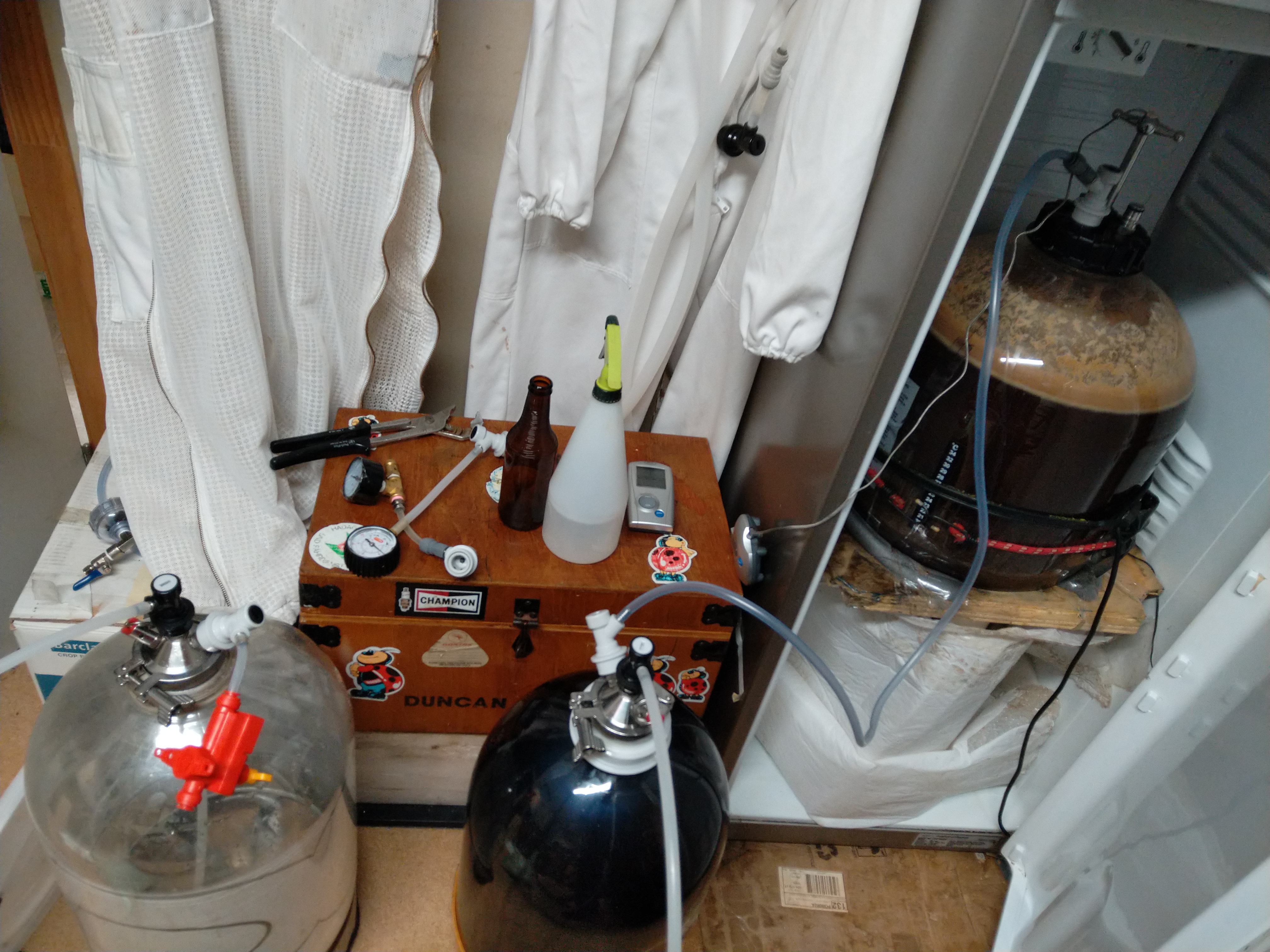haeffnkr
Well-Known Member
Hi,
My process to transfer beer lately has been to catch the beer in the fermenter with 1 to 4 points left of sugar left in it ( add a bit of sugar to the keg if needed to get carb level right ) and push beer from fermenter into purged keg with co2 and a spund valve on the gas post to keep it all closed loop. Any oxygen in the keg is eaten by the remaining fermentation in the keg. I then let the keg set at high end of yeast temps for about a week then put in the kegerator and serve.
Now I am trying my hand at pressure fermentaton. I have an ale at 70F and the pressure is 23 psi so far with the spund valve set at 28 to carbonate to around 2.4 vols.
What do I do next? Cold crash and then hook up co2 to the fermenter ( with floating dip tube ) at 15 psi then push the beer over to kegs with the spund valve set lower, say 5 pounds to keep the transfer closed and purged of 02? Is cold crashing going to help or hurt the beer/02 level in the beer? I guess i would make the beer clearer in the keg but I dont really have any issues with clearing of beer regardless and I thought the cold crash would get the beer pressure lower than 28 so I can transfer over?
Or?
thanks in advance for the help!
haeffnkr
My process to transfer beer lately has been to catch the beer in the fermenter with 1 to 4 points left of sugar left in it ( add a bit of sugar to the keg if needed to get carb level right ) and push beer from fermenter into purged keg with co2 and a spund valve on the gas post to keep it all closed loop. Any oxygen in the keg is eaten by the remaining fermentation in the keg. I then let the keg set at high end of yeast temps for about a week then put in the kegerator and serve.
Now I am trying my hand at pressure fermentaton. I have an ale at 70F and the pressure is 23 psi so far with the spund valve set at 28 to carbonate to around 2.4 vols.
What do I do next? Cold crash and then hook up co2 to the fermenter ( with floating dip tube ) at 15 psi then push the beer over to kegs with the spund valve set lower, say 5 pounds to keep the transfer closed and purged of 02? Is cold crashing going to help or hurt the beer/02 level in the beer? I guess i would make the beer clearer in the keg but I dont really have any issues with clearing of beer regardless and I thought the cold crash would get the beer pressure lower than 28 so I can transfer over?
Or?
thanks in advance for the help!
haeffnkr



